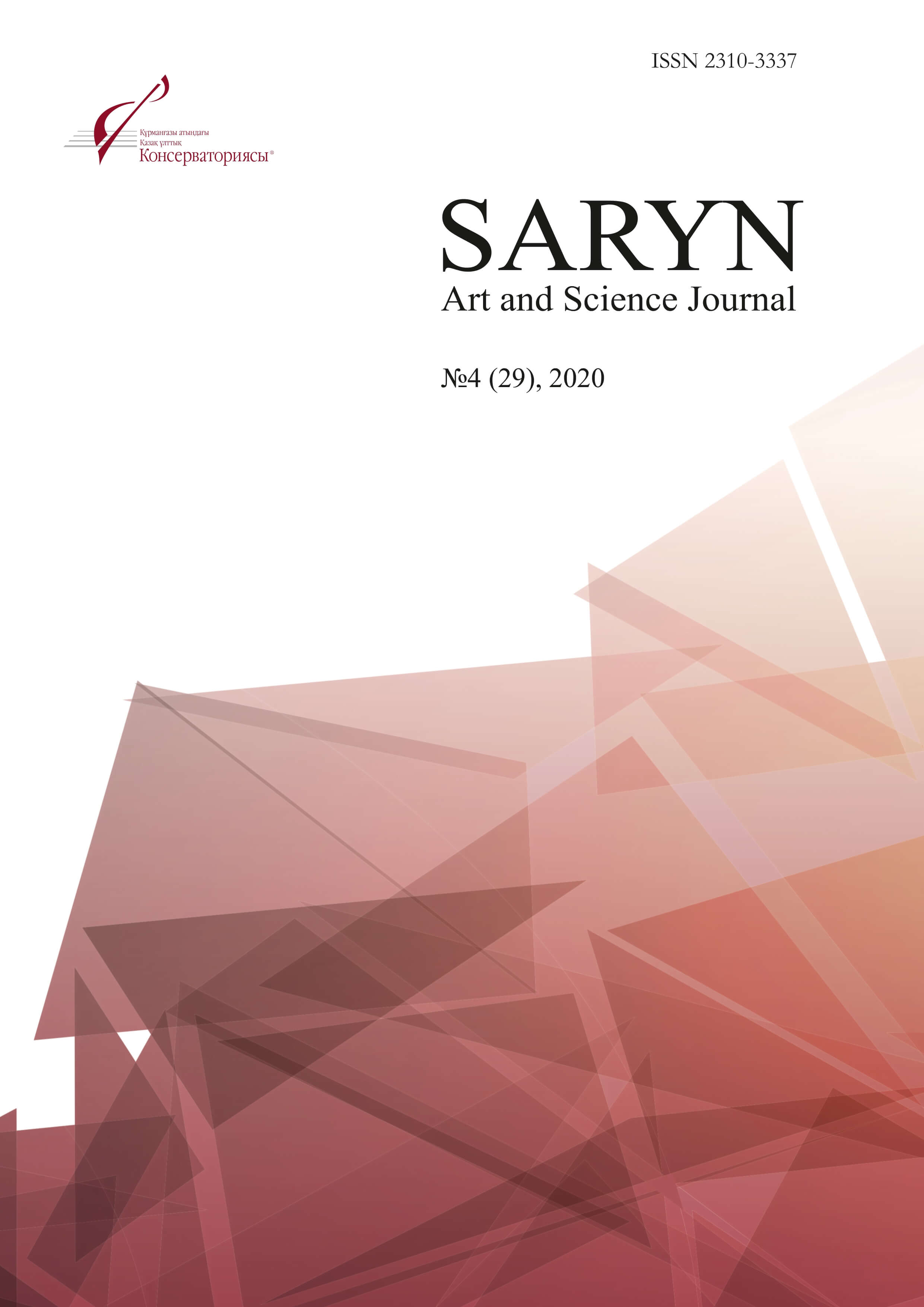Article information
Article publication date
2020-12-30
Article Page
48-56
Chapter
Arts & Humanities
License
Abstract
This article describes some of the noteworthy parallels between the pieces of music of Bella Bartók, the Hungarian composer of the twentieth century, composed based on his folklore and ethnographic research, and performed in collaboration with Zoltan Kodai; in areas populated by the descendants of former nomads from steppes and, on the other hand, Kazakh music in general. This consideration's main method becomes a "sacred-spatial method" of analysis, which was formulated in the works of B. Amanzhol, the Kazakh composer and musicologist. There is also the method of comparing some works from the early period of B.Bartok's creation that is used for fundamental features related to Kazakh tradition; here is a discovered double imaginative plan, which defines this given concept. In connection with this formulation’s basis, there are examples taken from the Kazakh tradition: the dombra music, the Kazakh ornament, the Tengri calendar, the rock art and the steppe landscape.
Keywords: sacred-spatial analysis, double imaginative plan, double-layer,
Keywords
sacred-spatial analysis
double imaginative plan
double-layer
thick and bodiless
space
Kazakh tradition
World View
References
Аманов Б. Композиционная терминология домбровыхкюев // Инструментальная музыка казахского народа. - Алма-Ата: Өнер, 1985. 152 с.
Мухамбетова А. Тенгрианский календарь (мушель) как основа кочевой цивилизации казахов. Международный Фонд Исследования Тенгри. 2012г. 37с.
Аманжол Б. Сакрально-пространственный анализ.. дисс. … канд. иск. – Алматы 2010 г.
Аманжол Б. статья «Музыка как язык сознания.
Нестьев И. Бела барток. Монография. – М.:Музыка, 1969
Гумилев Л. Древние тюрки. История образования и расцвета Великого тюркского каганата (VI-VII вв. н.э.).-Кристалл, 2002
Аджи М. Европа.Тюрки.Великая степь. – Мысль, 1998
Байжумин Ж. История рождения, жижни и смерти пастуха Авеля. Арийский лексикон. Алматы: Типография оперативной печати, 2009. – Т.1.
Кодаи З. Венгерская народная музыка. монография, Будапешт, 1961
Медоев А. Гравюры на скалах. - Алма-Ата : Жалын, 1979
Барток Б. Сборник фортепианных пьес «Для детей», 2 тома –Лань, планета музыки. 2018, цитата из последней страницы.
Amanov B. Kompozicionnaâ terminologiâ dombrovyhkûev // Instrumental’naâ muzyka kazahskogo naroda. - Alma-Ata: Ôner, 1985. 152 s.
Muhambetova A. Tengrianskij kalendar’ (mušel’) kak osnova kočevoj civilizacii kazahov. Meždunarodnyj Fond Issledovaniâ Tengri. 2012g. 37s.
Amanžol B. Sakral’no-prostranstvennyj analiz.. diss. … kand. isk. – Almaty 2010 g.
Amanžol B. stat’â «Muzyka kak âzyk soznaniâ.
est’ev I. Bela bartok. Monografiâ. – M.:Muzyka, 1969
Gumilev L. Drevnie tûrki. Istoriâ obrazovaniâ i rascveta Velikogo tûrkskogo kaganata (VI-VII vv. n.è.).-Kristall, 2002
Adži M. Evropa.Tûrki.Velikaâ step’. – Mysl’, 1998
Bajžumin Ž. Istoriâ roždeniâ, žižni i smerti pastuha Avelâ. Arijskij leksikon. Almaty: Tipografiâ operativnoj pečati, 2009. – T.1.
Kodai Z. Vengerskaâ narodnaâ muzyka. monografiâ, Budapešt, 1961
Medoev A. Gravûry na skalah. - Alma-Ata : Žalyn, 1979
Bartok B. Sbornik fortepiannyh p’es «Dlâ detej», 2 toma –Lan’, planeta muzyki. 2018, citata iz poslednej stranicy.




